Let’s get the boring stuff out of the way first...
What is a collectible?
Google: “Noun. An item valued and sought by collectors.”
Wikipedia (using the British spelling): “A collectable is any object regarded as being of value or interest to a collector. There are numerous types of collectables and terms to denote those types.”

While I'm constantly creating content for Splinterlands, I have been thinking a lot about the nature of collectibles. Not only what constitutes a collectible, but why does it have value? Which aspects of collectibles are necessary, and which are superfluous? Most importantly, where are we as a species in our grand journey of collecting?
I'm not claiming to be able to answer any of the above questions, but the more I think about it, I believe we have barely begun to scratch the surface of collecting.
Once upon a time, with items like bowls and blades, we collected things for their utility. The more of them we had, the more prepared we would be in any situation. At some point we began collecting things for the great value that could be held in a small package, such as with gold, gems or coins. Perhaps once we had everything we needed to survive we began collecting things like seashells from distant shores, things that reminded us of a fond memory and held no value beyond sentiment.
Now (in the age of Hoarders and Stoarge Wars) we have evolved into a people that collect things, often for no reason. Many people make the unfortunate and false assumption that holes in themselves will be filled if they can only surround themselves with things. This assumption is proven wrong over and over again.
So what is collecting all about? Where is it headed and what do NFTs and blockchains mean for the whole wild ride? Sorry for more questions, but I don't really have any answers.
Where am I Coming From?
I am an American, and because I am mostly familiar with American history, it is through the American lens that I will look at the history of collectibles. I am sure there is a great deal more information available from all over the world, but in my article-writing I like to focus on simple messages that I can easily contain and control. I will tell this story through baseball cards, and after all, baseball is America’s Pastime, is it not?
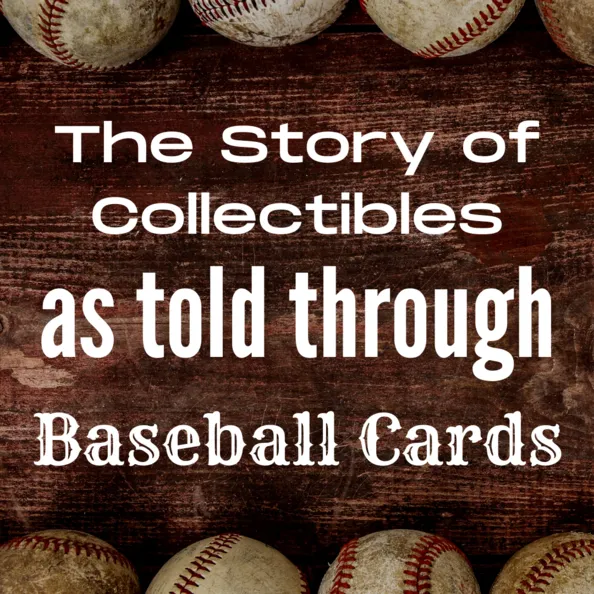
Baseball cards first began to appear in the post-Civil War United States of the late 1800s. As most people in the world know, the American Civil War was a brutal four years of brother-against-brother bloodshed that ended in 1865, the scars of which some say still remain today. The oldest known baseball card is from 1860, one year before the war began. It was a Brooklyn Atlantics team card (pictured below), and I assume that production in the budding baseball card industry quieted down once all the killing began.
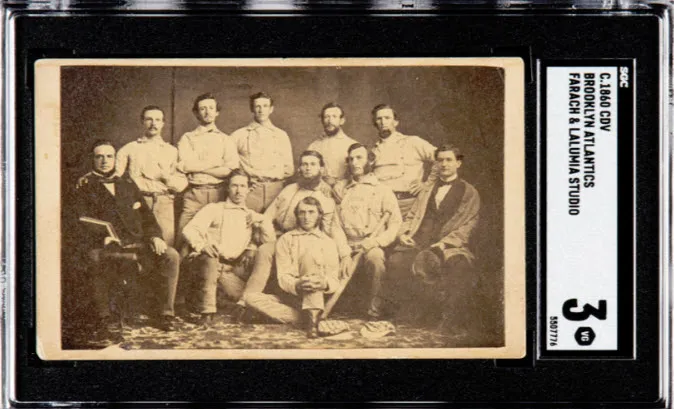
After the war and some years of recovery, when baseball cards (and indeed, baseball) made their reappearance, they were included with packs of cigarettes. This was first tried on a large scale by Goodwin Tobacco in 1886, when they created what has become known as the first official set of baseball cards.
To some historians, this could be considered the birth of the idea of the modern collectible. That's not to say that ancient royals, pirates, plunderers and custodians have not always collected things throughout history. No, this was a new idea of collecting in which items could hold value simply for their collectibility, not just what they could be melted into.
Why Baseball Cards?
In the late 19th century, baseball was already becoming America's pastime, her release, her distraction. And in a bleeding post-war, chaos-ridden frontier of a nation, she really needed the distraction. Mainstream photography was also rapidly growing at the time, so the marriage of baseball and pictures was bound to happen. It took Big Tobacco to turn the little baseball photo cards into a huge national hit, but not with the expected customers.
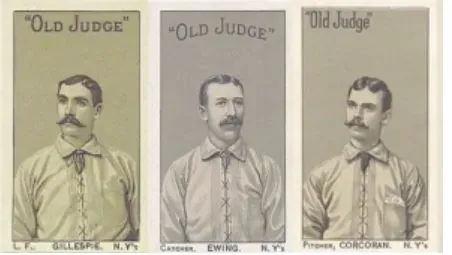
In the beginning, no one thought these cards would have value of any kind. They were only first placed in cigarette packs to stiffen up the package, protecting the smokes so flimsier outer packaging could be used. So while these cards began to be sought by collectors (mostly children), they were not originally intended to be the portion of the product that had value.
Turns Out Smoking Wasn't for Kids
Contrary to popular modern opinion, people figured this fact out fairly early in the United States. As early as the late 19th century, many states were passing legislation that restricted or prohibited the sale of tobacco to minors. I imagine that in these times, children would be eagerly awaiting their father's discarded cigarette packs in hopes of finding one of the treasured cards.
Because of how they were connected to tobacco, early baseball cards were (attempted to be) marketed primarily toward adults. They still needed a breakthrough product for children through which to distribute the cards. Such a solution would not come until after 1930, with the addition of gum.
The First "Collectible Set"
In the T206 Set, released by the American Tobacco Trust in 1909, we start to see similarities to some of the collectible cards we know from today. This iconic set was of course a limited print run, with cards placed randomly in cigarette packs throughout the country in true golden ticket fashion. There were 250 unique cards in the collection, including a Horus Wagner card that sold at auction in 2016 for $3.12 million. That card is known as the Holy Grail of Baseball Cards.
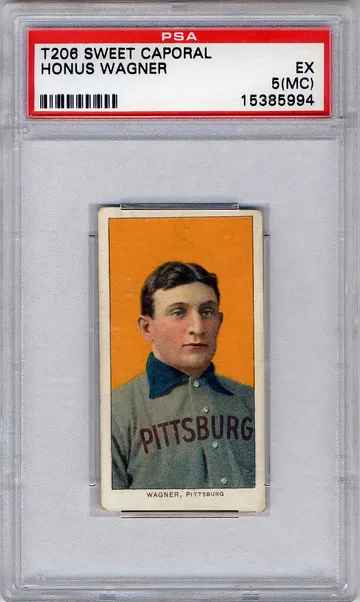
In the 1930s, two major chewing gum companies began selling their gum with baseball cards, but in terms of collectibles, we were still a long way from Product = Card. The cards were still seen as something to be included with some low-value commodity. By the early 1950s, we saw the emergence of the TOPPS company that we know today as the leader in gum baseball cards, but it would still be nearly 30 years before baseball cards were sold in packs with no gum.
The great companies that emerged from the golden age of baseball cards had names such as Goudy, Leaf, Bowman and Fleer. Few of them are still alive today, with TOPPS ultimately having won the war for the collectible card industry. After all the competition in the once-bustling baseball card industry, only two companies remain that are allowed to sell cards with Major League likenesses: Topps and Upper Deck.
Finally, in the 1980s, the gum left baseball cards forever. I guess that's when the collectors finally agreed that not only was the gum useless and ruining the cards, but that the cards were the real item of value all along.
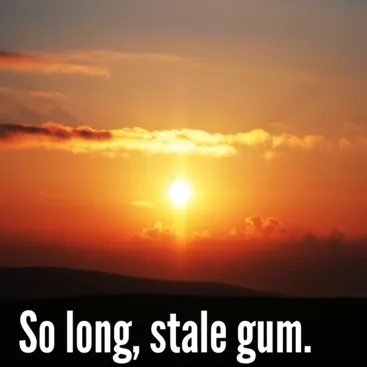
But then they all got carried away. Demand for the collectible cards (especially "Rookie cards) was so high in the eighties and early nineties that way too many cards were printed. They made trading cards for every sport and everything else they could think of. They did the thing pretty much to death. Most of those cards never had any value, and they sit to this day in countless of garages and memory boxes throughout this land. I have a bunch of them myself.
People still loved cards, but there were just too many out there for every company to make it. I think people at some point lost track of the idea that the cards were always symbols... or tokens.
Playable and Collectible
As many fellow nerds in my generation, I played Magic: The Gathering when I was growing up. Was it a collectible? Was it a game? It was a little of both and a little of neither. Even as a child I realized that the more I played with my Magic cards, the less value they would hold. Where was the fun in that, and how did it work out for me?
Years later I'm an adult with no Magic Cards. I thought I was a collector, but honestly I don't even know what happened to the piles and piles of MTG cards I had collected through the years. They may have been eventually destroyed through wear and tear. They may have been stolen from a garage at some point through the years, or they may have been sold in one of those dreaded yard sales in which my Mom always made me trim down my possessions.
It would have been nice if I had kept some of those Revised Edition MTG cards in pristine, binder-sealed protection somewhere on a dark humidity-controlled shelf, but that's not very realistic. The fact that any of those cards have resale value today is entirely dependent on the fact that 90% of players and collectors have the same story as me. The value of these cards is dependent on scarcity, and in this case, scarcity is increased by simply allowing your card to be destroyed. It's a bunch of treasure that few can get to, piled on the backs of the disappointed many.
There are of course other playable trading card games out there, and most of them are a blast to play. But in terms of collectibles, they definitely leave a few things missing.
Ditch the Physical... with NFTs
Who said that collectibles ever needed to be physical items in the first place? No one needed to say it, because it would have been ridiculous to suggest otherwise. How could we have predicted even fifty years ago that it would be technologically possible to create virtual items that had as much value as real ones?
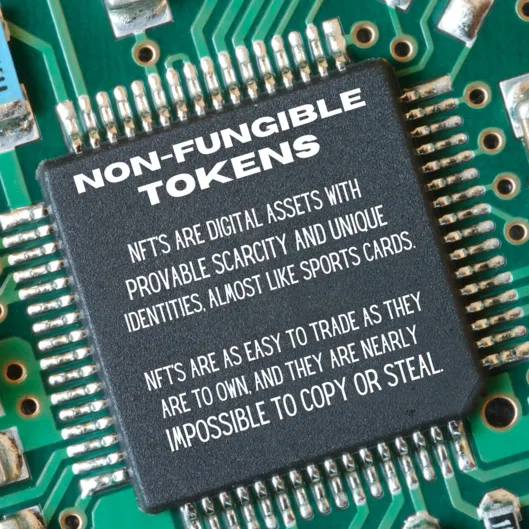
But we have made it possible. We now have Non-Fungible Tokens, powered by blockchains that offer 100% provable asset ownership for any type of collectible that anyone can imagine. I know that this is a strange way of looking at it, but check out all the downsides to collectibles being physical.
-They can be stolen.
-They can be destroyed.
-They can be counterfeited.
-They must be shipped.
-Finding buyers is difficult.
-Quality conditions.
Every single one of these problems is completely solved by using NFTs as collectibles. They cannot be copied, stolen or faked because the data is all verifiable on a blockchain. Blockchains make certificates of authenticity look like a note on which you forged your Dad's signature when you were 14 to get out of a test.
There is however, one downside to collectibles of the future leaving the physical realm...
They won't be things anymore.
It's sad when things come to an end, especially when they're literally things, but these are just growing pains, the best kind of pains. Aren't most of us eager to unload some of the superfluous possessions from our lives? Aren't you excited to see the possibilities of collectibles once we all agree that they can be anything, no longer limiting themselves to the physical?
I am absolutely ready to experience everything that Non-Fungible Token collecting has to offer. So far, compared to the traditional collecting of physical items, NFTs have provided much greater joy and much less hassle. I will miss flipping through my binders of old baseball cards and organizing my Magic cards into decks by color, but I am confident that the collectibles of the future will be captivating in new and completely unpredictable ways.
Thanks for Reading
This article probably left you with more questions than answers, but that alone ought to give you a little glimpse into my mind. Thanks for peeking in.
Splinterlands is the leader in NFT gaming. Collect cards. Battle for Glory and Rewards. Trade on the Market.
I'll see you in the virtual future... and the real one.


Information Sources
Newsday.com
FoodandWine.com
AllVintageCards.com
Topps.com
Upperdeck.com